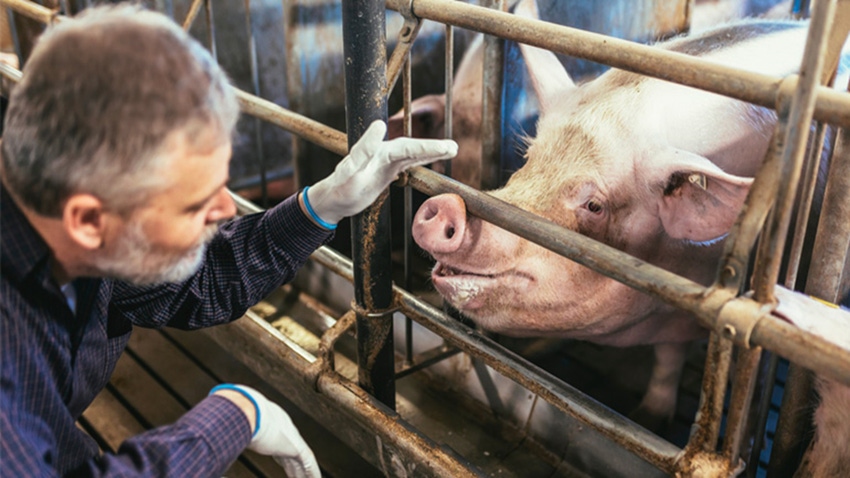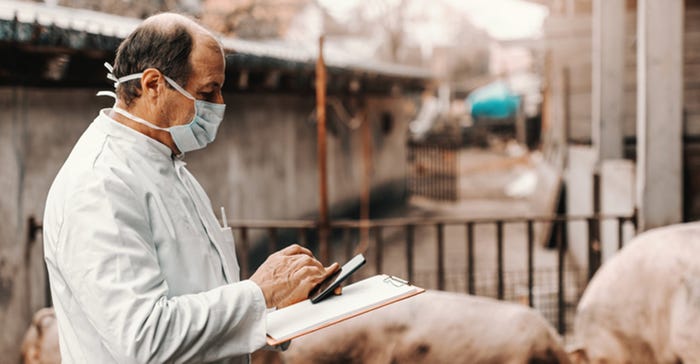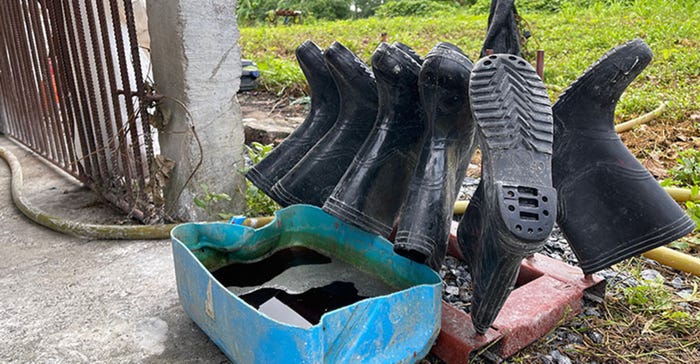Use biosecurity to protect pigs from African swine fever, know signs
USDA updated its African swine fever response plans in October and urges pork producers, others to put a premium on disease prevention
January 18, 2024

African swine fever continues to kill millions of pigs worldwide. Officials from USDA's Animal and Plant Health Inspection Service (APHIS) remain clear producers and pig owners must be focused on preventing the disease and immediately reporting any signs. To make sure the United States is prepared in the event of outbreak, APHIS updated its African swine fever (ASF) response plans in October.
"We are doing our part to prepare for ASF by updating our plans, particularly in the area of national-level ASF response preparedness, but to keep the deadly disease out of the United States, pork producers and pig owners need to remain vigilant when it comes to practicing biosecurity,” Dr. Rosemary Sifford, U.S. Chief Veterinary Officer. "Everyone on the farm should know the signs and how it spreads. Such steps will help protect your pigs and livelihood.”
African swine fever is a rapidly spreading infection that causes illness and death. While it has not been detected to date in this country, it is estimated that ASF could cost the U.S. as much as $75 billion if it is detected here. There is no cure or approved vaccine for the disease.
APHIS’s updates to ASF response plans for domestic pig and feral swine provide Federal agencies, States, industry, and others with key resources needed to respond quickly and minimize impacts of an African swine fever outbreak should it occur in the United States.
USDA’s most significant updates to African swine fever guidance include finalization of the African Swine Fever Response Plan: The Red Book, clarification on a 72-hour National Movement Standstill, and ASF Playbooks domestic and feral swine response.
APHIS officials continue to stress knowing the signs of African swine fever, how it spreads, and continuing to use biosecurity best practices are essential to prevent the disease from affecting the nation’s swine herd and producers.

Photo submitted by USDA
USDA resource helps producers, farmers to Protect Our Pigs
USDA is investing millions of dollars to keep the disease out of the United States. As a small part of that, USDA created the Protect Our Pigs campaign to raise awareness of African swine fever and help producers and veterinarians quickly find and share actionable information to defend their herds and livelihoods.
Pork producers, pig owners, and veterinarians can find the latest biosecurity best practices and control measures at the one-stop Protect Our Pigs website as well as free resources like custom videos, downloadable materials such as biosecurity action plans, and interactive training guides that help educate and train workers and visitors.
Know the signs to protect your swine
The signs of African swine fever infection can look much like those of other less deadly diseases that you may commonly see in swine.
That’s why it’s critical for farmers, producers, and veterinarians to stay alert for any of these signs:
High fever
Decreased appetite and weakness
Red, blotchy skin, or skin lesions
Diarrhea and vomiting
Coughing and difficulty breathing
Abortions or sudden death
If you see any signs, immediately report them to state or federal animal health officials or call USDA for appropriate testing and investigation at 1-866-536-7593.

Photo submitted by USDA
Transmission of African swine fever can occur in several ways, including:
Direct contact between healthy and infected domestic or wild swine.
Indirect transmission when healthy pigs eat virus-contaminated feed or pork products, or come into contact with the virus on clothing, shoes, equipment, vehicles, or food waste.
Insect-borne transmission with soft ticks, stable flies, leeches, and swine lice spreading the disease from sick to healthy swine.
To learn more about safeguarding your herd and livelihood, visit Protect Our Pigs.
You May Also Like
.png?width=300&auto=webp&quality=80&disable=upscale)



